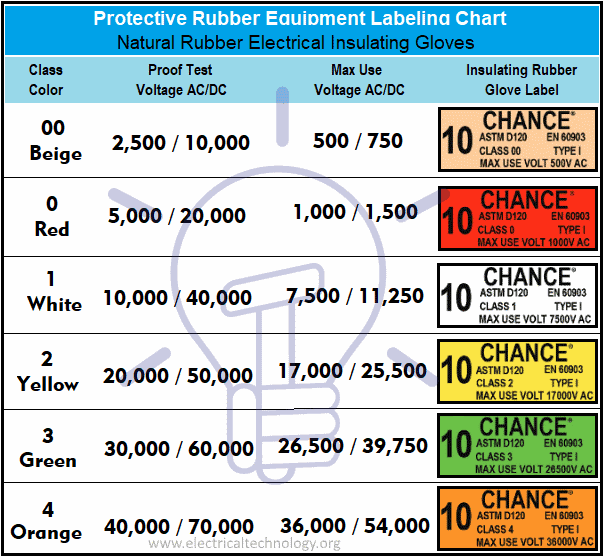Personal Protective Equipment (PPE) for Electrical Works
Electrical Works – Personal Protective Equipment (PPE)
To protect the employee’s body from injury Personal Protective Equipment (PPE) must be used.
Basic PPE consists of:
- Cotton protective clothing with long sleeves
- Helmet or hard hat
- Goggles for eye protection
- Gloves (leather or rubber)
- Hearing protectors
- Safety footwear
Figure 1 shows examples of PPE.

Helmets normally need be worn only when working on outdoor switchgear, where they serve to protect against falling objects and collisions with solid objects at head height. Outdoor substations should always be considered ‘safety helmet’ areas and helmet wear made compulsory.
Hearing protectors are only required when the in a noisy situation, that can occur during construction works.
Eye protection should be worn when working with hazardous fluids, particularly mineral oil, to prevent splashes into the eye. They should always be worn when washing down the internal parts of oil circuit breakers.
Safety footwear should be routinely worn in all working areas and the shoes or boots should incorporate steel toe-cap and non slip soles.
Specific works require specific protective equipment.
Safety harness should be worn when working at any height greater than 1.5 m above ground level and a full harness equipped with a connector is preferred. Fall arrest equipment may be necessary when working at high level. Harnesses should be chosen that are suitable for their intended application and should be of a design that will support the user in the correct position. A harness should be comfortable, allowing adequate movement of the user and the unhindered operation of other devices within the system.
Depending on the conditions of the work a sit harnesses may be necessary; sit harness has lateral and central attachment points and are designed primarily to be used for work in suspension, although they may also be used for work restraint purposes.
Respirators can also be necessary when a leakage of SF6 is suspected. Although SF6 is not toxic, it degrades under the heat of arcing to gases.
When performing energized works or switching operations insulated gloves and dielectric shoes are required.
The gloves must be tested and suitable for the working voltage. Labeling chart for insulated gloves according to ANSI/ASTM (ANSI: American National Standards Institute. ASTM: American Society for Testing and Materials) Standard D120 is shown in Figure 2.

Also Read: All About Electrical Protection Systems, Devices And Units
PPE for Arc Flash
When a risk of arc flash exists, the selection of PPE and its characteristics can be done as a consequence of the calculation of the incident arc energy or consulting a hazard category classification table, being one of those tables can be found at NFPA (National Fire Protection Association) Standard 70E.
Protective equipment for arc flash, as shown in Figure 3 consists of:
- Flame resistant protective clothing
- Arc Flash protection hood
- Hard hat
- Safety glasses
- Gloves







